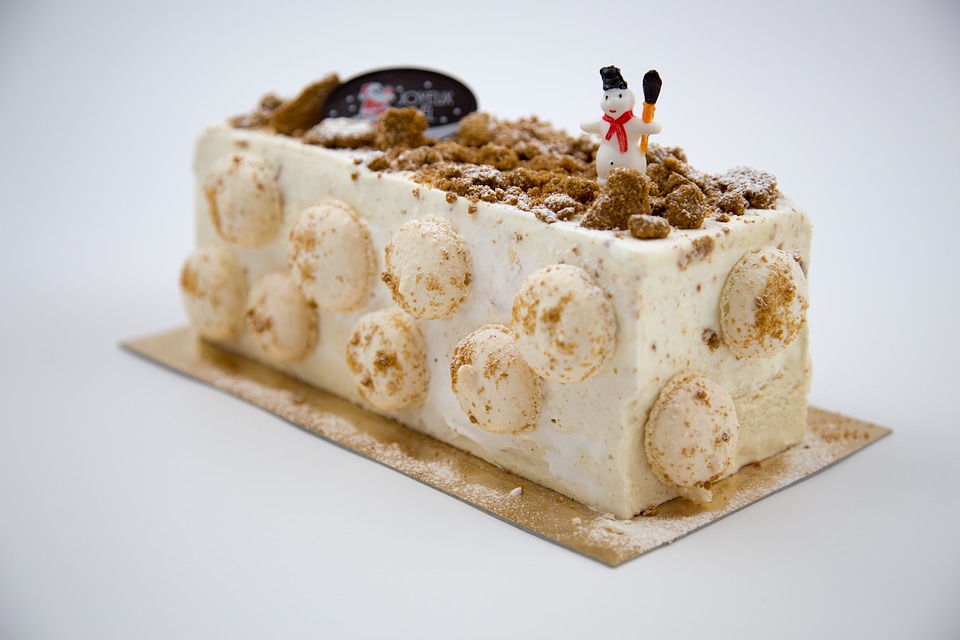What Better Dessert for Christmas Than a…Log? Posted by Josh Dougherty on Dec 25, 2015 in Culture
While Christmas Day may be winding down, the season isn’t really over until the New Year. Christmas has many traditions, and many of them are tied to food. Everyone loves family meals consisting of a baked ham or turkey, savory sides, and delicious desserts (miam ! yum!) – and we’re not even counting the sugar overdose from all those homemade cookies and fudge.

We have our traditional pies, and France, Quebec, and certain French colonies get to chow down an elaborate and historical dessert known as une bûche de Noël. Called a Yule log in English, it’s simply a sponge cake rolled and filled with a chocolate buttercream and designed to resemble a log. Some cake makers will cut out branches to stick out of the log. Others will whip up meringue mushrooms, add fresh berries, make fake holly, or sprinkle powdered sugar on top to resemble snow. The cake as we know it today emerged during the 19th century, but the origins of the actual Yule log date back before the medieval era.
At this time, Gaelic Europeans and Celtic Brits believed trees held special powers and burning them to create les cendres (ashes) would increase the strength of this power. Before the winter solstice, people would search out a huge log, decorate it with holly and ivy, and burn it to celebrate days finally becoming longer. The log’s ashes would be collected and used in medicines. In addition to its healing benefits, the ashes also guarded against evil and accidents. It was also believed that spreading the ashes in les champs (the fields) would yield a nice harvest. Certaines personnes (some people) would keep charcoal or cinders from the original log because relighting them during a thunderstorm would protect your home and property from being struck by lightening.
When Christianity spread through Europe, this tradition still continued. The logs were brought in and burned in the hearth, the fireplace area. Onlookers would observe les flammes (flames) and make predictions about the upcoming year – important things like how many calves would be born that year and how many marriages would take place.
Au fil des années (over the years), heaths in houses were built smaller, and people weren’t bringing full-sized logs into their homes anymore. It’s impossible to pinpoint exactly when people stopped burning the Yule logs in their homes and created edible versions instead, but some research suggests that the cakes date back the 1600s judging from popular ingredients of the time. The traditional bûche de Noël has meringue and marzipan decorations, and both of these were common treats at that time. Same goes for sponge cake – it was mentioned as early as 1615 in Gervaise Markham’s “The English Huswife.”
Want to try one of these delicious, calorie-laden Christmas desserts? No problem. You can make it yourself by following one of the many recipes online, but make sure you have time and patience. Some of the recipes require more than 8 hours of your time!
Baking not up your alley? Just head on down to your local pâtisserie (bakery specializing in sweets) and order one. You’ll find more simple ones à prix abordable (at an affordable price) – about 20 euros – but you can easily drop more than 100 euros for a fancy one.
Bon appétit !

Build vocabulary, practice pronunciation, and more with Transparent Language Online. Available anytime, anywhere, on any device.
About the Author: Josh Dougherty
Just your typical francophile. If you have any topics you'd like me to discuss, feel free to let me know!




Comments:
June Radicchi:
Thank you. Would enjoy more French language please.
June Radicchi:
More French please.